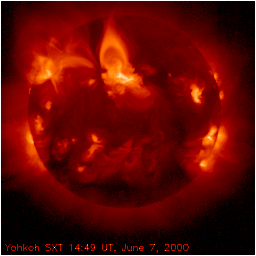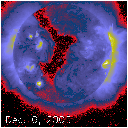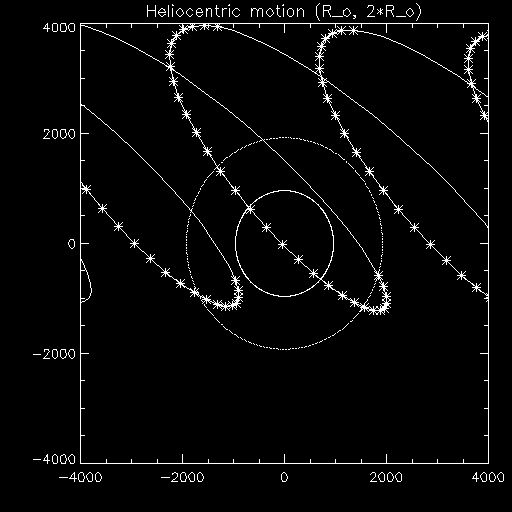
|
1997
Weekly Nuggets came into being
in 1997, when it became obvious that a huge wealth of information was contained
in the Yohkoh data base, and a continuing record of the highlights was
needed. During this year it became clear that we had passed the minimum
of the 11-year sunspot cycle sometime in 1996. The rise to solar
maximum was underway! |

|
1998
The Nuggets in this year cover
a diverse range of topics -- including flares and solar active regions
(whose understanding is an important goal of Yohkoh), but also other phenomena
related to the solar cycle, the effect of the Sun on Earth, and the "two
steps forward, one step back" beginnings of the lurching return to a higher
level of solar activity. |

|
1999
In this year, close collaboration
with the ESA/NASA Solar and Heliospheric Observatory (SOHO) focussed attention
on so-called halo coronal mass ejections (CMEs) as solar eruptions headed
toward Earth. The solar activity level lagged behind expectations -- would
it catch up? Would the peak really come in Y2K, as expected?
|

|
2000
Almost five years ago scientists
predicted that the
the maximum of solar cycle 23 would probably occur this year.
As the year unfolded we
saw many flares and coronal mass ejections,
and by the end of the year it became clear that their
prediction
was very close to what
really happened.
A big event this year was to have been the launch of NASA's
HESSI
solar flare mission, but a
shakeup
and a launch vehicle problem
delayed it until 2002.
|

|
2001
By any definition, it's the beginning of the millennium.
Have we hit solar max yet? It's impossible to tell, until we're many
months past it.
Even the
official prediction as of the end of 2000
from the Space Environment Center at NOAA shows that we can't yet really be sure
whether it's already happened or will happen during this year.
We could only repeat our previous bit of advice -- stay tuned.
|

|
2002
Research is an uncertain business.
Although it seems likely that old Sol hit the maximum of the
sunspot cycle in the year 2000, the statisticians tell us
that because the Sunspot Number started to go up again during
the year 2001
we can't be entirely sure. Yohkoh
enters this year with an uncerain future, as well, as the result of the troubles
described in an earlier nugget.
|








